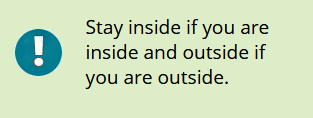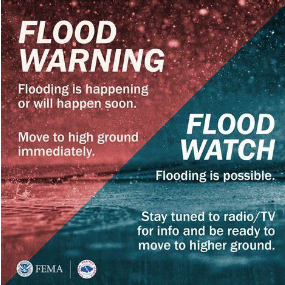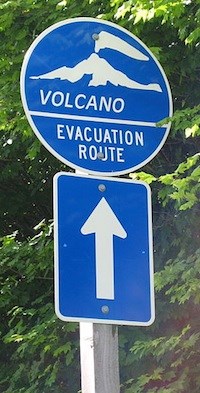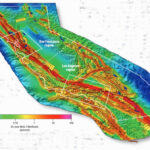Family (and babysitters, nannies, caregivers, overnight guests) Disaster Plan
This plan is comprehensive but not complete; each household will have unique and even unanticipated issues that will need to be addressed as part of planning. As we say in Community Emergency Response Team (CERT) training: adapt, improvise, overcome.
Also, some items in this plan may not be applicable to a given household.

A recent FEMA study found that 30 percent of people have not prepared for an earthquake because they think that emergency responders will help them, and over 60 percent say they expect to rely on emergency responders in the first 72 hours following a disaster.
Emergency managers warn us: “YOYO96…You’re on your own for 96 hours. With preparation you can get through it… if you have thought through everything you can be prepared…”
Being prepared to be self-sufficient for 96 hours or longer (including no water running or electricity and no access to a grocery store or pharmacy) after a quake will also prepare you for winter storm power outages or rolling blackouts.
You need to think through your disaster plan from the point of view of many potential problems. A spill of hazardous materials near your home could mean instant evacuation, but you might have more time in case of a wildfire. Meet with family/roommates, and discuss possible disasters such as fire, severe weather or earthquakes; plan for pets, put together basic supplies, make evacuation plans
(including actually driving evacuation routes to understand them better).
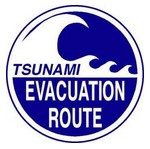
According to the USGS “In 1985, a swimming pool at the University of Arizona in Tucson lost water from sloshing, or a “seiche,” caused by a magnitude 8.1 earthquake in Mi-choa-can, Mexico, 1,240 miles away.” After the magnitude 6.9 Loma Prieta quake the 14 feet to 16 feet deep diving well at De Anza College, Cupertino, was half full.
What will the earthquake feel like?
Sometimes an earthquake feels a ship in rough seas swaying, some quakes cause sharp repeated jerking.
How long will the shaking of an earthquake last?
The bigger the quake, the longer it lasts. For example, a 9.1-magnitude earthquake in Japan in 2011 went on for nearly six minutes. NOAA reported: “A tsunami that was generated by the earthquake arrived at the coast within 30 minutes, overtopping seawalls and disabling three nuclear reactors within days.” “Ninety-eight percent of the (quake) damage was attributed to the tsunami.. . the total destruction of more than 123,000 houses and damage to almost a million more.”
Step number one:
Do not run outside during a quake:
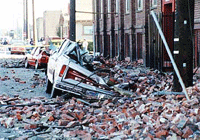
Practice DROP, COVER AND HOLD ON. During the quake, drop under a sturdy desk or table, hold on, and protect your eyes by covering your face with your arm. If there’s no table or desk nearby, sit on the floor against an interior wall away from windows, bookcases, or tall furniture that could fall on you.
Teach children to DROP, COVER AND HOLD ON.
Students have asked me Is it safe to hide in a bathtub during an earthquake ? The answer is, you do not have the time to get to the bathtub and can be injured trying to do so. Immediately DROP, COVER AND HOLD ON.
If you are outdoors, find a clear spot away from buildings, trees and power lines.
If you are in a car, slow down, maybe even stop if the rest of the traffic is doing so, drive to a clear place, and stay in the car until the shaking stops.
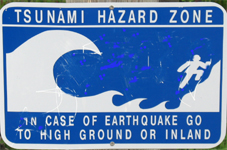
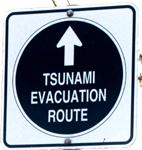
Redwood National Park, much of which is on the coast, offers this:
“Know the signs of a tsunami:
• A strong earthquake lasting 20 seconds or more near the coast.
• A noticeable rapid rise or fall in coastal waters.
• A loud roaring noise from the ocean.”
If you are at the beach and feel an earth quake big enough to make you have trouble standing up, or a strong quake that lasts 20 seconds or more, a tsunami with waves 10, 20 or even 100 feet high is coming within minutes and you must go to higher ground right away (“Move as far inland and uphill as possible.”) You do not have time to pick up the picnic/towels/ swim gear or move your car. Grab friends/family and start running up hill, even to a street far above the beach. Be careful to avoid downed power lines and buildings that might be coming down in aftershocks. You might be able to go back for your car after a quake if a tsunami does not materialize, but you risk your life if you try to get your car moved right after the quake. “Return ONLY when local officials tell you it is safe to do so.”
If a tsunami does happen where you are, once the water recedes, do not return to the coast. Tsunamis are a series of waves. More may be coming. The first wave might not be the biggest.
After the 1964 Alaska earthquake 90 people died in Alaska from tsunamis and 6 people died from tsunamis that reached California and Oregon.
An Alaska preparedness brochure warns: “Never go down to the shore to watch for a tsunami. When you can see the wave you are too close to escape.”
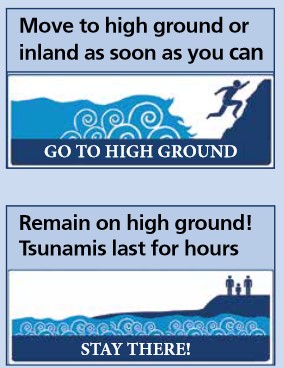
During flooding from a hurricane, officials asked:
“Do not visit disaster areas. This could hamper any emergency operations.”
___________________________________________
Step number two:
Designate an out of the area, long distance phone contact that family members can check in with to tell where and how they are. Then everyone can check in with this person and get updates on everyone else instead of the whole world calling you. You could have another contact for coworkers, your cycling club or rugby team. (After an earthquake, almost all local phone lines, including cellular, will be jammed within minutes and people who need 911 help will not be able to get through!!)
________________________________________
Step number three:
Prepare a list of family members’ health info: allergies, medications (and dosage, times taken, other details regarding specifications of administration/regime; e.g. insulin), medical conditions, immunization dates, social security numbers. You might want to include family members not in residence with you that you are care taking of to some degree.
Fill out one of these for each family member and keep one copy at home and a copy with you (maybe in the glove compartment?): emergency information form
KEEP THE PRESCRIPTIONS REFILLED. You might not be able to get refills for days after a earthquake power outage or storm power outage or just as you are leaving for a vacation or . . .
________________________________________
These first three steps should be taken right away, then start choosing from what to do among rest of these:
Evacuations:
Pick two or three places to meet:
1) right outside the house in case of a sudden emergency, like a kitchen fire. Would the front yard be safer/faster to get to or the backyard? You should actually practice evacuating your home. You should include the pets in this practice, and have a specific person assigned to get the pets. Will the washing machine move during the quake, blocking that door?
If you live in a multistory home, practice setting up and using escape ladders from a first-floor window rather than a upper story. Include practice moving the pets as well as the people.
2) outside your neighborhood, in case you can’t return home for whatever length of time. Make plans for where kids will go and wait, where you will reunite, after a quake or disaster if it hits when you are not at home. When a chemical tanker truck overturns on a local roadway, for example, and the authorities say to evacuate, your family should have a preplanned meeting place near home (a nearby city park would have restrooms. If you planned with your neighbors you could all pick the same nearby place.) and another a little farther from home and another if you drive far away, such as the home of a co-worker you exchanged info with.
Plan several escape routes from the neighborhood by foot, bike and car. It could be wise to map out and actually walk, bike and/ or drive the routes in advance
Does your city/county have a specific evacuation plan? When hurricanes are coming some places turn both directions on a highway into one way traffic.
Look at your evacuation plan at least once a year, part as a review for everyone to remember where they should be meeting, and also because some locations you choose may no loner be accessible to the public or even exist anymore.
Walk through house and decide where to find earthquake “cover” in each room, how (and when) to exit (two ways to exit each room, best way and second best). Practice each of these at least yearly, especially when you add new family members / roommates.
BRING WITH YOU WHEN YOU EVACUATE:
Please think through what you would bring if you had only a few moments to evacuate, or if you had ten minutes or so. (Remembering that if you are told by authorities to evacuate NOW, do it NOW.) Print up a list, and post it where you can quickly find it for the potential ten minute or so packing. You will be panicking at the time and leave behind things you reeeeally meant to bring.
Have the essential items (including extra set of car keys, prescriptions, spare hearing aids, spare glasses, in easy-to-grab, easy-to-carry bag (such as packed for trips), easily reached as you evacuate.
Wallet (with a few checks in it), cell phone(s), car keys, house key set, job key set, hearing aids you took out at bedtime could be in the same place on a bedside table every night. (Are your cell phone charging cords each on different tables/desks? Move them all to that bedside table or a table that is on the way out the door.)
Have regularly made backup external hard drives of your computer files in the safe deposit box and in your car.
Scan documents (see a list below) and put them on the backup external hard drives instead of just trusting a “fireproof” safe. Also scan and post the photo album online or on the backup external hard drives so you don’t need to go looking for it on the way out the door in a hurry.
Important documents to scan and also put (certified copies as needed) in a (waterproof and is it really fireproof?) container: previous years tax records, will/living trust and letter of instructions, insurance policies, contracts, deeds, stocks and bonds, passports/visas, social security cards, immunization records, bank account numbers, credit card account numbers and companies (and phone numbers to contact credit card companies to cancel if your card is lost or compromised), inventory of valuable household goods, important telephone numbers, list of family physicians, the style and serial number of medical devices such as pacemakers, family records (birth, adoption, marriage, death certificates), vehicle, boats, etc. make, identification and license numbers, that ginormous list of passwords, and some cash in small bills (debit / credit card /ATMs might not be working for a few days).
and a photo of you and your pet(s) together as a proof of ownership could be on your cell phone as well,
When was the last date each of you had immunizations?
If possible, take irreplaceable keepsakes with you.
Also in your car: medical supplies you can’t do without for any length of time, spare shoes, jacket, flashlights (electric torch) / extra batteries, toothbrush, water/snacks you might consume any day (chocolate is a food group). Typical supplies for winter weather emergencies while on the road might also be used after an earthquake.
And copies of the emergency information form you filled out.
You do have a local news radio station set to play on your car radios, don’t you? And maybe your local city / county if they have their own AM / FM radio station for emergency news broadcasts.
Make it a policy to ALWAYS keep at least a half tank of gas. (Whether for the power outage due to weather or an earthquake, or just when people have been lined up for blocks to get gas when everyone needs to evacuate at once or so you can change routes, idle or travel slowly or turn back in a winter storm.)
If you are told to evacuate from an approaching wildfire, if time allows, turn off propane tanks and gas and air conditioning and leave exterior lights on. You should not be wearing flip-flops! (Or, you should have a (old?) set of long pants, long-sleeved shirts, shoes with tread in the car.) If you have extra time, consider evacuating pets and livestock sooner than necessary. And at pets and earthquakes, won’t it be easier to evacuate your cat in a proper carrier s/he is used to than in a pillowcase?
During 2024 Hurricane Helene, a CBS news station reported that a sheriff
“has a warning for residents who have chosen to ignore evacuation orders and wait out Hurricane Helene at home:
Mark yourself with your information so officials can identify you later. . .
“take a black magic marker, write your name, your Social Security number, everything on your arm”
so officials can identify residents in a worst-case scenario.”
________________________________________
It might not be easy to get home from work– plan with your family that you might not get home that day. Have alternate routes planned based on possible flooding (for example, a crack in a dam floods downstream from the dam), freeway collapse. IF you are not being told to evacuate NOW, listen to the radio for awhile before you take off.
You can find detailed maps (with zoom in capability) of potential road closures, risk of liquefaction and flooding, such as this map of potential Bay Area road closures after a San Andreas fault 7.2 quake,
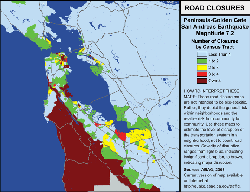
(see maps at ABAG website https://abag.ca.gov/our-work/resilience
Start with — HAZARD VIEWER but note that it has said: “Note that due to the complexity of the maps, each layer may take some time to load.”
Do you live in a flood zone?
Most flood insurance policies have a 30 day waiting period, so waiting until winter rains look like they could flood a nearby creek is too late. (Renters can get flood insurance.)
“Anywhere it rains, it can flood”
What is and is not covered by flood insurance:
https://www.floodsmart.gov/whats-covered
In preparation for potential flooding, FEMA recommends:
“Take photos and videos of all major household items and valuables. Retain these documents in a safe place because they are important when filing insurance claims.”
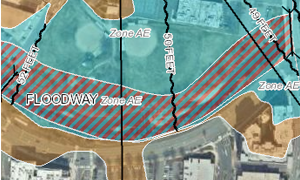 The FEMA Flood Map Service Center (MSC) is the official public source for flood hazard information https://msc.fema.gov/portal
The FEMA Flood Map Service Center (MSC) is the official public source for flood hazard information https://msc.fema.gov/portal
https://www.valleywater.org/floodready/is-your-home-in-a-flood-zone
Water does not need to be this deep to get you in trouble:
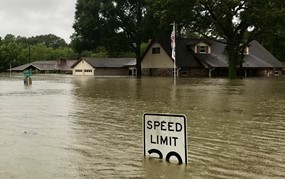
FEMA warns:
“Turn around. Don’t drown. Do not walk, swim, or drive through flood waters. Just six inches of fast-moving water can knock you down, and one foot of moving water can sweep your vehicle away. The depth of water is not always obvious. The road may be washed out under the water, and you could be stranded or trapped.”
And flood waters can have toxic chemicals in them.
Some localities are starting to fine people who drive around flooded road barriers and need to be rescued or have their vehicles extracted.
“Understand the difference between a flood watch and a flood warning. The National Weather Service often issues a flood watch before a flood warning. A watch means you should begin preparing for a possible evacuation because flooding is possible. A flood warning means flooding is occurring or about to occur, and you should take immediate action to protect yourself.”
________________________________________
After the quake, put phone receivers back on the hook
Call 9-1-1 for life threatening emergencies, otherwise stay off the phone.
Expect aftershocks. There is commonly a 20% chance of an equal or larger quake within a few hours.
For example,
here is a chart from USGS of aftershocks expected after the magnitude 6.9 – 1989 Loma Prieta, California Earthquake:

here is a chart from USGS of aftershocks expected after the magnitude 7.0 – December 2024 Offshore Cape Mendocino, California Earthquake:

Aftershocks can occur days, weeks or even years after the first earthquake. They can be of equal or larger magnitude than the initial earthquake. They can occur miles away from the initial quake epicenter.
Do not start a fire in the fireplace/woodstove to keep warm. Aftershocks could bring down your chimneys and even if you have running water right after the quake, you might not have any soon after. (To put out the fire, or just for drinking) Always keep enough full gallons of water to be able to put out the fire in a hurry, very near the fireplace. (Ours are hidden in the wood box.)
Don’t flush the toilet until you are sure it and the plumbing for it, is not damaged.
Open cabinets carefully. Objects might have moved and could fall on you.
Do not use elevators.
Take pictures to document any damage before making temporary repairs, or you could have trouble when the insurance adjuster comes to look at your property and decides what is/is not covered under your insurance.
________________________________________
In your car: first aid kit and manual, battery-powered radio, flashlight and extra batteries, local
maps in case the evacuation route is unfamiliar to you, booster cables, shovel, tire repair kit and pump, flares, bottled water and non-perishable high energy foods such as granola bars, raisins (replace these as you snack on them).
Keep at least 1/4 tank, or even better, a half tank of fuel in your car at all times.
If a power line falls on your car during a quake or storm, stay inside until a trained person removes the wire. The power company will know the line is down. If one falls in the street, stay away from it. Consider it to be a live wire even if you see no sparks or arcing.
During any power outage, earthquake or not, according to the City Of Campbell, California:
“When traffic signal lights are out, motorists must exercise greater care when approaching intersections. The California Vehicle Code outlines the responsibilities of motorists and pedestrians under these conditions:
Motorists must stop at the entrance to the intersection and may proceed with caution when it is safe. Drivers intending to turn left must first yield the right of way to oncoming traffic.
Drivers traveling upon a roadway that terminates at the intersection must yield the right of way to vehicles traveling upon the roadway that continues through the intersection.
Drivers stopping at the intersection at the same time as another motorist to the right or left must yield the right of way to a motorist on his or her immediate right.
Motorists must yield the right of way to pedestrians proceeding in a crosswalk.
Even though pedestrians in a crosswalk have the right of way, they are not relieved of the duty to care for their own safety. Pedestrians may not walk or run into the path of a nearby vehicle, nor unnecessarily stop or delay traffic.”
From ABAG:
“DO NOT attempt to cross damaged roads.
DO NO go near downed power lines.
DO NOT stop under underpasses or on bridges.
DO NOT drive through water.
DO NOT abandon your car, except if it is unsafe to stay with it. (If you must abandon it, you should not leave it in a traffic lane. If forced to abandon it in a traffic lane, you should leave your keys in it.”
________________________________________
Public transit commuters:
- Familiarize yourself with all the exits at the stations that you use in case you ever have to take a different exit.
- Keep a local map with you in case you need to walk or take another form of transportation.
- While commuting, carry a small flashlight, dust mask and a pair of protective gloves.
________________________________________
At work you’ll want flashlight, work gloves and walking shoes; as well as supplies to move to a shelter, including toothbrush, snacks, some water, personal first aid kit.
________________________________________
Put the number of each phone on the phone;
post emergency numbers next to each phone, including 911 or other fire, police, ambulance, medical (doctor, Kaiser advice line, dentist) animal control, poison control (1-800-222-1222), power company, family (Mom, Dad, older siblings) work numbers, nearest relative, local contact, out-of-state contact, and…
Post another list next to the phone at work.
At both phones post emergency numbers, and address/description of cross streets for people not living with you that you have some responsibility for. Know their preferred medical providers, health insurance carrier and individual and group numbers, medication(s) and where they are (gamma globulin in freezer, insulin in refrigerator?).
Try a pay phone (if there are any near you) if home service is disrupted as the two systems are often on separate circuits.
When you call 911 from a land line telephone, such as in your house, you get dispatch for the city the phone (your house) is located in. When you call 911 from a cell phone you get the Highway Patrol at a central location. Sometimes, especially if you are not calling about something on the freeway/highway, it would be faster to get dispatch for the specific city the problem is happening in. This requires knowing the direct dial seven digit phone number for each dispatch.
Direct dial emergency phone numbers for most cities in Santa Clara County, California, can be found at the Santa Clara County ARES/RACES (Amateur Radio Emergency Services/Radio Amateur Civil Emergency Services) website.
http://www.scc-ares-races.org/SCCoEmergencyNumbers.pdf
San Mateo County cities (and the San Francisco airport) direct dial phone numbers can be found at:
http://www.blackberryreact.org/smco911phones.html
Or you can find the seven digit direct dial numbers in the blue government pages of the Pacific Bell white pages book. Make a ‘sticker’ for the back of your cell phone with the numbers for your city and anyplace you jog, recreate, work, visit relatives, etc. (or program the numbers into the phone).
The Red Cross requests “If your wireless phone came pre-programmed with the auto-dial 9-1-1 feature turned on, turn off the feature. Do not program your phone to automatically dial 9-1-1 when one button, such as the “9” key is pressed. Unintentional 9-1-1 calls, which often occur with auto-dial keys, cause problems for emergency call centers. Lock your keypad when you’re not using your wireless phone. This action prevents automatic calls to 9-1-1.”
________________________________________
Teach kids: when to call 911 (including if someone falls or gets seriously hurt or has trouble breathing); how to call 911 (if you get no dial tone, wait for one; hanging up will further delay your call. Quickly state the emergency, answer all questions and stay on the line until instructed otherwise by emergency personnel);
what to do when they hear the smoke detector, fire alarms, burglar alarm or local community warning alarms such as horns or sirens; (do they know what the smoke detector and fire alarm sound like?)
how to make long-distance phone calls, and
how to turn on the wind-up or battery powered radio for emergency information (mark the location of the emergency station on the dial).
Kids should also know when and when not to answer the door or phone, and know not to give their name to strangers or tell them that they are home alone. Many safety experts recommend: use a ruse to let a caller think an adult is home, such as “my dad can’t come to the phone right now. Can I take a message?” Teach children to always answer the door, but not to open it for strangers.
Instruct children to talk through the door when strangers are present. Pretend a parent is home. “My mom can’t come to the door right now. Come back later.”
Don’t open the door for deliveries. Tell delivery people to leave the item outside or drop it off with a neighbor. Don’t open the door for service representatives, as they would have an appointment and be known to be coming when an adult is at home.
If you have a cordless phone, have your child bring it to the door, in case someone tries to get inside. Have a through-the-door viewer at kids’ eye level or wheelchair eye level as well as standing adults.
Take the kids to:
FEMA for kids, with lots of fun learning tools
and see Helping Children Cope with Disaster
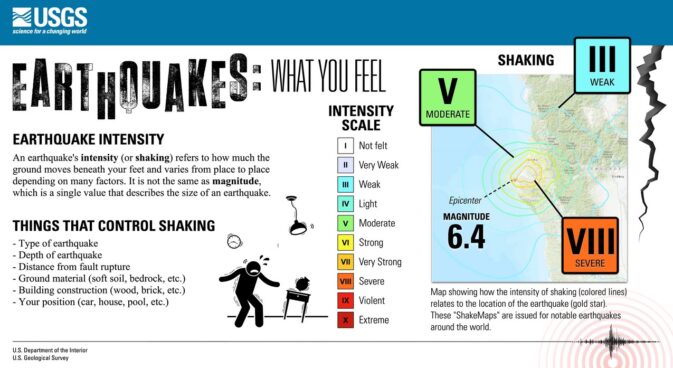
______________________________________________
”
- Never use a generator, grill, camp stove or other gasoline, propane, natural gas or charcoal-burning devices inside a home, garage, basement, crawlspace or any partially enclosed area.
- Keep these devices outdoors, away from doors, windows and vents that could allow carbon monoxide to come indoors.
- Opening doors and windows or using fans will not prevent CO buildup in the home. Although CO can’t be seen or smelled, it can rapidly lead to full incapacitation and death. Even if you cannot smell exhaust fumes, you may still be exposed to CO. If you start to feel sick, dizzy, or weak while using a generator, get to fresh air RIGHT AWAY – DO NOT DELAY.
- Install CO alarms in central locations on every level of your home and outside sleeping areas to provide early warning of accumulating carbon monoxide.”
And has warnings about types of extensions cords, refueling as well as what generator to choose.
OSHA has a Using Portable Generators Safely fact sheet
https://www.osha.gov/sites/default/files/publications/OSHA3286.pdf
that includes:
“Never use a generator indoors or in enclosed spaces such as garages, crawl spaces, and basements. NOTE: Open windows and doors may NOT prevent CO from building up when a generator is located in an enclosed space.”
After Hurricane Laura in Louisiana in 2020,
“the most powerful hurricane to hit the United States in two years“, it was found that
as many as half of the deaths were due to carbon monoxide from generators.
______________________________________________________________________
From FEMA, for businesses, but also applicable to households:
“Sheltering
If a tornado warning is broadcast, a distinct warning signal should be sounded and everyone should move to shelter in the strongest part of the building. Shelters may include basements or interior rooms with reinforced masonry construction. Evaluate potential shelters and conduct a drill to see whether shelter space can hold all employees. Since there may be little time to shelter when a tornado is approaching, early warning is important. If there is a severe thunderstorm, monitor news sources in case a tornado warning is broadcast. Consider purchasing an Emergency Alert System radio – available at many electronic stores. Tune in to weather warnings broadcast by local radio and television stations. Subscribe to free text and email warnings, which are available from multiple news and weather resources on the Internet.
Shelter-In-Place
A tanker truck crashes on a nearby highway releasing a chemical cloud. A large column of black smoke billows into the air from a fire in a nearby manufacturing plant. If, as part of this event, an explosion, or act of terrorism has occurred, public emergency officials may order people in the vicinity to “shelter-in-place.” You should develop a shelter-in-place plan. The plan should include a means to warn everyone to move away from windows and move to the core of the building. Warn anyone working outside to enter the building immediately. Move everyone to the second and higher floors in a multistory building. Avoid occupying the basement. Close exterior doors and windows and shut down the building’s air handling system. Have everyone remain sheltered until public officials broadcast that it is safe to evacuate the building.
Lockdown
An act of violence in the workplace could occur without warning. If loud “pops” are heard and gunfire is suspected, every employee should know to hide and remain silent. They should seek refuge in a room, close and lock the door, and barricade the door if it can be done quickly. They should be trained to hide under a desk, in the corner of a room and away from the door or windows. Multiple people should be trained to broadcast a lockdown warning from a safe location.”
“Property conservation activities for specific forecast events include the following:
Winter storm – Keep building entrances and emergency exits clear; ensure there is adequate fuel for heating and emergency power supplies; monitor building heat, doors and windows to prevent localized freezing; monitor snow loading and clear roof drains.
Tropical storms and hurricanes – Stockpile and pre-cut plywood to board up windows and doors (or install hurricane shutters); ensure there is sufficient labor, tools and fasteners available; inspect roof coverings and flashing; clear roof and storm drains; check sump and portable pumps; backup electronic data and vital records off-site; relocate valuable inventory to a protected location away from the path of the storm.
Flooding – Identify the potential for flooding and plan to relocate goods, materials and equipment to a higher floor or higher ground. Clear storm drains and check sump and portable pumps. Raise stock and machinery off the floor. Prepare a plan to use sandbags to prevent water entry from doors and secure floor drains.”
Read more at:
https://valleywaternews.org/2020/10/27/do-you-know-if-you-live-in-a-flood-zone/
Floodwaters can be contaminated from oil, gasoline, or raw sewage, and can hide downed power lines that may have electrically charged the water. They could conceal debris like glass, dead animals or poisonous snakes. Never allow children to play in floodwaters.
• Do not walk through moving water, no matter how shallow. Six inches of moving water can make you fall. If you have to walk in water, walk where the water is not moving. Use a stick to check the firmness of the ground in front of you and to aid in balance.
• Do not drive into flooded areas, no matter how shallow. If floodwaters rise around your car, abandon the car and move to higher ground. You and the vehicle can be quickly swept away. A foot of water will float many vehicles. Two feet of rushing water can carry away most vehicles, including SUVs and pick-ups. Play it safe; turn around, don’t drown.
Clean and disinfect everything that got wet. Mud left from floodwater can contain sewage and chemicals.
______________________________________________________________________________________
Much of the earthquake preparation plans at these webpages could also apply to living near a volcano.
Mount Rainier National Park warns:
“Mount Rainier is the most hazardous volcano in the Cascades not only in terms of its potential for eruption, but also the risk of producing major debris flows even without eruption. ”
“Rising water level, shaking ground and a rumbling noise may signal a debris flow or lahar. If you are near a river and notice:
A rapid rise in water level
Feel a prolonged shaking of the ground
Hear a roaring sound coming from up valley (often described as the sound made by a fast–moving freight train)
Then move quickly to higher ground! A location 160 feet (50 m) or more above river level should be safe.”
______________________________________________
As a part of preparing for the next earthquake, do a what if? survey of your home, crawl space, attic . .
earthquake home hazards survey
______________________________________________________________________
Earthquake information sources is a page of links to most often needed how-to-do-it information from PG&E, City of San Leandro, Association of Bay Area Governments, Los Angeles Fire Department, USGS, Red Cross, and the Federal Insurance and Mitigation Administration.
Helping Children Cope With Disaster
Store water for after an earthquake
Babysitter Consent and Contact Form
Earthquake and pets advice Consider having the vet ‘microchip’ your pets, and more… Wouldn’t it be easier to transport your cat in a real carrier s/he is used to than in a pillowcase?
______________________________________________
Overwhelmed by the amount of things to do to prepare for a disaster?
Try: Fast, easy, cheap earthquake preparedness for the first to do.
Earthquakes can not be predicted,
but the USGS has a “new earthquake forecast model for California … authoritative estimates of the magnitude, location, and likelihood of earthquake fault rupture throughout the state.”
see it in full size and read details at: https://pubs.usgs.gov/fs/2015/3009/
______________________________________________
The author of this webpage, (written as a homework reading assignment for my students), does not give any warranty, expressed or implied, nor assume any legal liability or responsibility for the accuracy, completeness, or usefulness of any information, product, or process included in this website or at websites linked to or from it. Users of information from this website assume all liability arising from such use.
